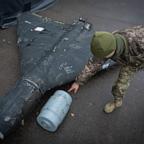Flash flooding, mudslides ongoing threat from Santa Barbara to Los Angeles to San Diego
Flash flooding and mudslides are an ongoing threat from Santa Barbara to San Diego on Monday, with the Los Angeles area in the bull’s-eye, as a historic atmospheric river storm slams Southern California.

Ten inches of rain fell in some areas of Southern California. Many spots saw more than a month’s worth of rain over the last 24 hours.
Los Angeles recorded over 4 inches of rain in 24 hours, marking the city’s wettest day since December 2004.


The heavy rain and flooding will continue through Tuesday morning. Another 2 to 4 inches of rain is possible from Los Angeles to San Diego.
By Tuesday afternoon, the downpours will wind down. By Wednesday morning, the showers will linger in Southern California and most of the heavy rain will move into Arizona.
-ABC News’ Melissa Griffin









